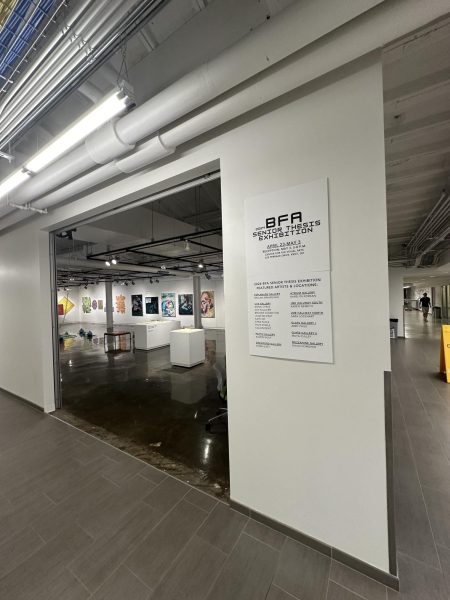HOLD FOR MAY 4 COVERAGE Current ROTC students recall May 4 with help from eyewitness
April 19, 2016
It took 13 seconds, 67 shots, 28 National Guardsmen, nine injured individuals and four dead students to make Kent State infamous on a Monday afternoon.
Why did the Ohio National Guard shoot at an unarmed crowd of college students on May 4, 1970? It has been 46 years since the Ohio National Guard shot at an unarmed crowd of college students on May 4, 1970. Regardless of the decades that have passed, any are still trying to answer that question.
Just a few days earlier on April 30, 1970, President Nixon announced the invasion of American troops into Cambodia, which triggered anti-war protests all of the country. In Kent, the anti-war protests turned into anti-guard protests when 1,000 Ohio National Guard soldiers showed up on Kent’s campus.
Jerry Lewis is an Army Veteran, sociology professor, faculty marshal organizer and witness of the May 4 events. He co-wrote a book titled, Kent State and May 4th: A Social Science Perspective, with Thomas Hensley.
He serves as an emeritus professor of sociology and leads a discussion about the events that occurred before, during and after the May 4 shooting.
The discussion is a critical analysis on the war that came home and helped shaped American history. It is to study how the elements and circumstances became of control and to study what mistakes everyone involved on that fateful day made.
Another purpose of the discussion is to “put us in the shoes of the soldiers first,” said Lt. Col. Matthew Fox, who organized this discussion.
“We strive in mission command to make sure we paint the right picture for our soldiers so they can make correct decisions, because someone made a terrible decision pulling triggers on unarmed students that day,” Fox said.
Fox wanted to have this discussion now to help the seniors before they commission and because something like this has not been done since the shooting happened.
“I wanted to walk with the soon to be soldiers on the hollow ground that this incident happened,” Fox said. “To show respect to the people we lost that day and to show respect to the service that we are here to learn.”
The discussion consisted of a 46-minute documentary video showcasing the events that transpired.
Afterwards, Lewis, ROTC seniors and officers used the six leadership principles applied to the actions of the Ohio National Guard – Cohesive Teams, Shared Understanding, Commander’s Intent, Discipline Initiative, Mission Orders and Prudent Risk – to examine if the soldiers did what they were suppose to do.
One topic discussed was that there were two groups of soldiers who fired bullets that day, with one group firing into the crowd and the other firing into the sky.
The soldiers whom shot in the air had no control of where their bullets went and whether or not they hit someone or something.
The soldiers who shot into the crowd, “acted on initiative and probably felt they needed to do something because they did not have a shared understanding of what to do,” said an ROTC senior.
Another topic examined in the discussion was the students. Lewis discussed how the 1970s was a time of great political activism by college students.
The anti-war riots, rallies and protests leading up to May 4, were meant to make a statement because the students targeted political symbols, such as burning down the ROTC building on campus and attacking gas and electric companies downtown.
The students made assumptions that the guns the Ohio National Guard had weren’t loaded with bullets. When the shots were fired, many students assumed the soldiers shot blanks.
Lewis was standing in the Prentice parking lot, located by Prentice Hall when the tragedy occurred.
“When the shots were fired I thought they were shooting at me, so I dove to cover which is what I learned when I was in the Army,” Lewis.
He then proceeded to inform students that the soldiers did in fact use real bullets and told the students to leave the scene to find safety.
After the conversation, Lewis showed the ROTC seniors and officers significant places around the area where the shootings occurred. After the tour outside, everyone gathered into the May 4 Visitor’s Center in Taylor Hall.
Fox’s key takeaway from the discussion is, “getting the idea across to these soon to be lieutenants that what you do and the decisions you make and how you make those decisions have a broader affect.”
Lewis hopes the ROTC students learned how complex leadership can be.
Kayla Enochs, a senior ROTC cadet with a major in exercise physiology, said, “the presentation really opened my eyes to both sides of the story and the aftermath of the events and how it caused a disruption throughout the nation rather than just on campus.”
She also thinks its more honorable being part of ROTC at Kent State, despite the acts committed that day almost 50 years ago.
“It shows how we overcame that event and how we have grown from it and learned from it, to better the ROTC program,” said Enochs.






















